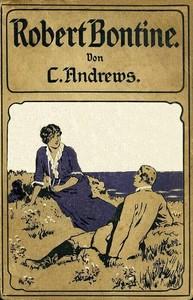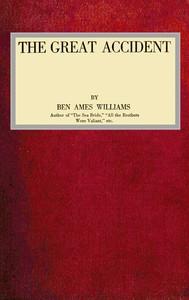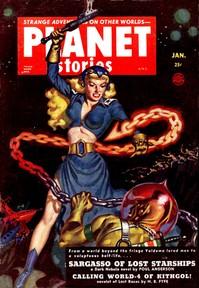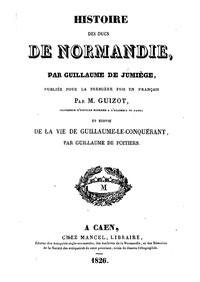Read this ebook for free! No credit card needed, absolutely nothing to pay.
Words: 136149 in 42 pages
This is an ebook sharing website. You can read the uploaded ebooks for free here. No credit cards needed, nothing to pay. If you want to own a digital copy of the ebook, or want to read offline with your favorite ebook-reader, then you can choose to buy and download the ebook.


: Rogers' Directory of Norwich and Neighbourhood by Rogers Edmund Dawson - Norwich (England) Directories
Transcribed from the c1858 Jarrold and Sons edition, using scans from the British Library, by David Price.
ROGERS' DIRECTORY OF NORWICH AND NEIGHBOURHOOD.
PRINTED FOR THE PROPRIETOR, BY JARROLD AND SONS, LONDON STREET, NORWICH.
PREFACE
IT is never pleasant to have to make apologies; and yet there are some circumstances under which an apology is a duty, and therefore, whether pleasant or not, should be tendered cheerfully. The present is a case in point. The work should have been published earlier, and would have been had it been possible. The truth is that the "Guide to Streets, &c.," was a novel experiment, and the compiler--having nobody's experience to guide him--thought the task an easier one than it turned out to be. It was at first imagined that the matter for this "Guide" could be obtained simultaneously with the information for the Directory itself. The attempt proved the mistake. It was found that to do both well they must be done distinctly and independently. Hence chiefly came the delay, to say nothing of the fact that for many "local habitations" it was very difficult to find the "name." In yards and courts not a few, and in some out-of-the-way streets even, not one of the inhabitants could give his whereabouts a designation! The task, however, has been achieved at last; and it is trusted that upon the whole the public will think that it has been achieved well. A few errors have crept in, doubtless; but no labor and no care have been spared to avoid them. The hope is confidently cherished that the faults of the work will be forgiven for the sake of its excellencies, especially as the compiler promises to "do better next time."
HISTORY OF NORWICH.
A century later, and we find the lay and clerical elements in rancorous hostility. Perpetual animosities between the citizens and the monks rose at last to such a height, that the priory was, in 1234, entirely destroyed; while 38 years subsequently, the cathedral itself was well nigh demolished--an offence for which the city was visited with the terrors of an interdict. The injury, however, was not irreparable, for with a fine of 3000 marks imposed on the principal inhabitants, and with some liberal donations, the edifice was sufficiently restored as in 1278 to be consecrated by Bishop Middleton, in the presence of Edward the First and his queen, Eleanor--the first royal visit of which we have any reliable evidence. A wall was, moreover, raised round the Cathedral precincts--St. Ethelbert's Gate being erected by the citizens; and this seems for a time to have prevented further dissension. Between the two epochs of contention above-named, arose the first recorded charitable institution in Norwich--Bishop Walter de Suffield founding St. Giles' Hospital, for the triple purpose of ensuring masses for his soul's repose, providing an asylum for superannuated and infirm priests, and furnishing a refuge for 13 aged persons; to the last object only, it is hardly necessary to say, is the building now devoted; and enriched by subsequent benefactions, the hospital accommodates 50 of each sex, who, on admission, must have reached 65 years of age.
Another noticeable feature which must by no means be overlooked while dwelling on this period, is the enclosure of the city, from Conisford or King street to Pockthorpe, by a wall. This important work, a testimony to the increasing prosperity of the city, as well as to the turbulence of the times, was commenced in 1294 and completed in 1320; but it was not till two and twenty years afterwards that, through the munificence of one Richard Spynk, the wall was flanked with 40 towers, furnished with 12 gates, and fortified by a broad ditch. The gates remained up to 1792, and the wall, though now built upon on every side, may yet be traced for almost its entire length, being especially prominent as the southern boundary of Chapel Field, and offers many a study to the antiquarian and the historian.
But we now come to a catalogue of disasters: the Cathedral was seriously injured by fire, 1463; the fatal plague ravaged the city, 1479; and in 1505 and 1507 there were great fires, in the latter year 718 houses being consumed, which obliged the corporate authorities to prohibit the erection of thatched buildings. In 1517, disputes between the citizens and the monks being again rife, Wolsey came over on a mission of mediation, but it was not till several years afterwards that peace was restored by the settlement of the civil and ecclesiastical boundaries and jurisdictions. We must not forget to notice the burning of the martyr Bilney, after an imprisonment in a dungeon of the Guildhall; and scarcely were the lurid fires of persecution extinguished before a memorable political outbreak exposed the city to the ravages of contending armies, and excited the anxious consideration of the youthful Edward's ministers. The details of Kett's rebellion are too well known to require recapitulation; suffice it to say that after obtaining possession of the city and defeating the Marquis of Northampton in an encounter on Palace Plain, the insurgents were dispersed by the Earl of Warwick--Robert Kett being executed at the Castle, and William at Wymondham. To close a paragraph of casualties, persecutions, and tumults, we must record the visitation of the sweating sickness, striking down near 1000 victims in 1551, and of the quartan ague six years later; the conviction of several citizens in 1570, for participation in a plot for assassinating the queen, re-establishing Popery, and expelling the strangers "out of the citye and realme," of whom four suffered death, and others confinement for life; and the imprisonment in the Castle of certain persons apprehended in Suffolk for "refusing to come to the church in time of sermons and common prayer."
Turning from these saddening scenes, we note the foundation, in 1557, of Caius College, Cambridge, by a Norwich citizen of that name, physician to three sovereigns of the house of Tudor, and a man of learning. He was one of the first of a long line of distinguished men educated at our Grammar School--an institution of ancient date, but which did not become located in the present venerable structure until the reign of Elizabeth. And this mention of "Good Queen Bess" reminds us of her visit to the old city in 1578, spending a week in all sorts of festivities, pageantries, and amusements, to the unutterable delight of her loyal subjects. Nearly a century was destined to elapse ere Norwich was honored with another sight of royalty; and as there is a back-ground to every picture, so all this rejoicing was followed by the dread calamity of the plague--introduced, indeed, it was supposed, by some of the Queen's attendants--and which slew five thousand victims.
Coming down to 1671, we must chronicle the visit of the "Merry Monarch," with his Queen and brother, who were sumptuously entertained by the Duke of Norfolk, as well as by the civic grandees: an animated description of the city at this period--with its ducal palace, its prosperous manufactures, and the priceless cabinet and botanical gardens of the famous Sir Thomas Browne --is given by Macaulay. Ten years later, James, Duke of York, paid a second visit; but in 1687 he had, as king, forfeited all popularity by his arbitrary interference with the corporation; and the representative of the house of Howard, riding into the market at the head of 300 knights and gentlemen, amid the acclamations of the citizens, declared for a free parliament. It was the son of this duke, who, taking umbrage at the mayor's forbidding his comedians entering the city with trumpets, demolished the whole of his ancestral palace, said to be the largest town house in the kingdom out of London, and which, from Christmas to Twelfth-night, was wont to be open to all comers.
Free books android app tbrJar TBR JAR Read Free books online gutenberg
More posts by @FreeBooks

: Robert Bontine: Roman by Andrews C Schultz Marie Translator - English fiction Translations into German


: The Great Accident by Williams Ben Ames - City and town life Fiction; Love stories; Political fiction; Middle West Fiction






